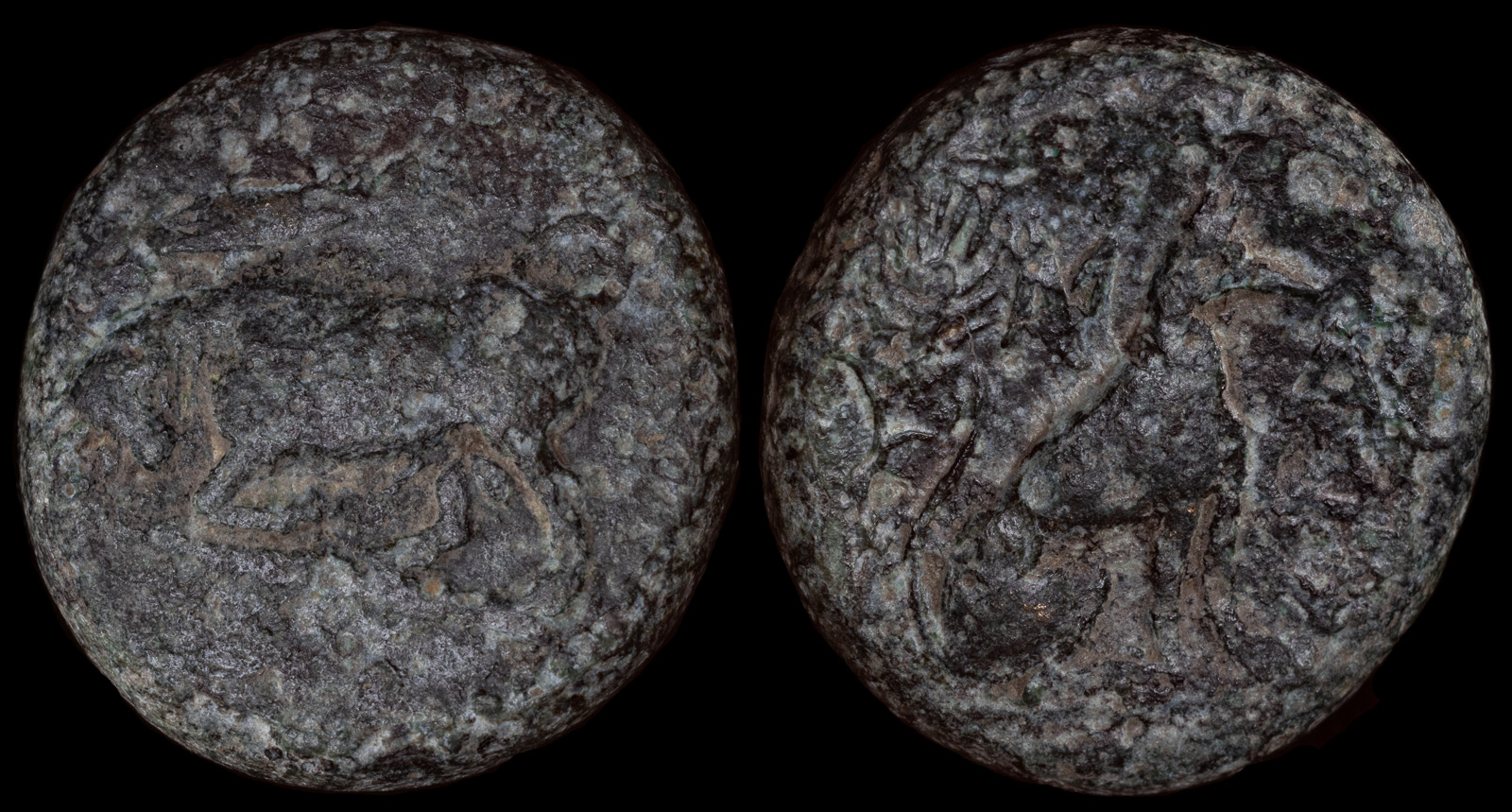
Thrace, Madytos
Circa 350 BCE
AE 8.57g, 19mm, 11h
Bull butting to left; fish above
ΜΑΔY, dog seated to right; grain ear to left
SNG Copenhagen 923-924 var. (grapes above bull); CN Type 8144; HGC 3.2, 1507
Madytos, whose coinage is relatively rare, was famed in antiquity as containing the tomb of Hecuba.
Hecuba was the mother of many of the principal characters on the Trojan side in the Iliad, notably Hector, Paris, and Kassandra. She herself also appears several times in the work. Legend has it that, after the Achaian victory, she was given to Odysseus as a slave. This did not go over well with her, so the gods transformed her into a dog.
There are several variants of the dog part. One variant is that – once a dog – she escaped from the ship. Another has Odysseus stoning her to death, after which she turned into a dog and was buried. A third variant has Odysseus stoning her, then burying her in what he labeled “a bitch’s grave.”

Thrace, Madytos
circa 350-300 BCE
Æ 16 mm, 3,66 g
Obv.: Bull butting left; above, grain ear. Dotted border.
Rev.: Μ-ΑΔΥ; Dog seated right; behind, grain ear and crescent.
Ref: HGC, 1508; SNG Copenhagen, 923-25.
Either way, her tomb was located near Madytos, and it’s speculated that’s the reason for the dog on this coin. Madtyos fell under Athenian control until the area was conquered by the Macedonians. Not much is known about it’s place during Hellenistic times.